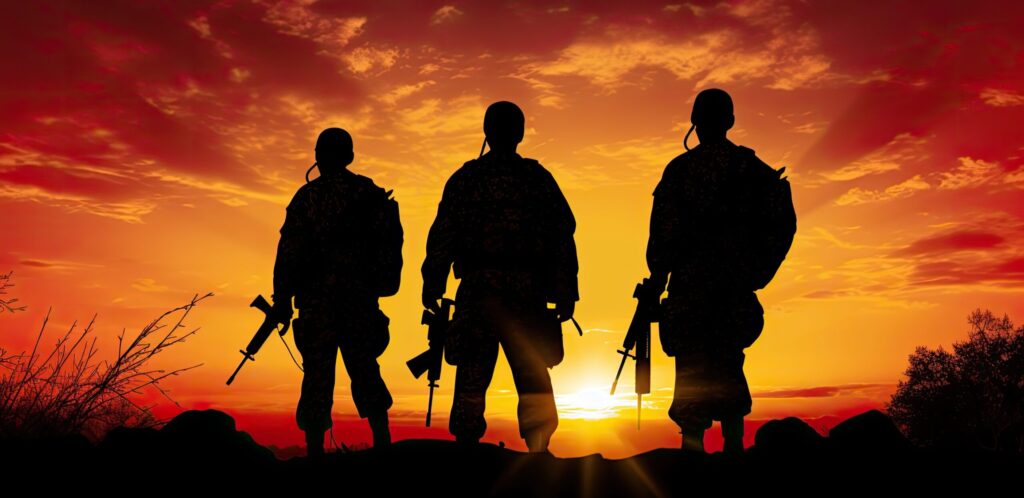Introduction
Veterans, particularly those who have served in certain environments and under specific conditions, may face an increased risk of developing skin cancer. This blog will explore whether veterans are at heightened risk, the exposures that might predispose them to skin cancer, how they can identify potential skin cancer, and what steps they should take if they suspect they have it. Additionally, we will discuss military policies and protocols aimed at protecting soldiers from sun damage and skin cancer.
Are Veterans at Increased Risk of Skin Cancer?
Yes, veterans can be at an increased risk of developing skin cancer. Several factors contribute to this heightened risk, including prolonged exposure to the sun and other environmental hazards encountered during active duty.
Exposures That Increase Skin Cancer in Veterans
Sun Exposure
- Deployment Locations: Many veterans are deployed to regions with intense sunlight, such as deserts and tropical climates, where UV radiation is particularly strong.
- Duration and Intensity: Extended periods of outdoor activity without adequate sun protection can lead to significant cumulative UV exposure.
Chemical and Environmental Exposures
- Burn Pits: Exposure to toxic smoke from burn pits used to dispose of waste can contribute to skin damage.
- Herbicides and Chemicals: Agents like Agent Orange and other chemical exposures have been linked to various cancers, though direct links to skin cancer are still under investigation.
Protective Gear and Practices
- Inadequate Sun Protection: In some cases, military uniforms and gear may not provide sufficient protection against UV rays, especially during prolonged outdoor activities.
- Lack of Sunscreen: Historically, sunscreen might not have been regularly issued or used by soldiers, increasing their risk of sunburn and long-term skin damage.
Identifying Skin Cancer in Veterans
Symptoms to Watch For
Skin cancer can be subtle when it first develops. Veterans should therefore be vigilant about changes in their skin, looking for:
- New growths or sores that do not heal
- Changes in the size, shape, or color of moles or other spots
- Itching, tenderness, or pain in a specific area
- Scaliness, oozing, or bleeding from a skin lesion
Types of Skin Cancer
In general, there are three main types of skin cancer to be aware of:
- Basal Cell Carcinoma (BCC): Often appears as a pearly or waxy bump on sun-exposed areas.
- Squamous Cell Carcinoma (SCC): May appear as a firm, red nodule or a flat lesion with a scaly, crusted surface.
- Melanoma: The most dangerous form, characterized by a mole that changes in size, shape, or color, or a new pigmented or unusual-looking growth.
What Should a Veteran Do if They Suspect Skin Cancer?
- Seek Medical Attention: If a veteran notices any suspicious changes in their skin, they should schedule an appointment with a healthcare provider as soon as possible.
- Get a Referral: A primary care physician can refer the veteran to a dermatologist for further evaluation and potential skin biopsy.
- Document Exposure: Veterans should keep records of their service history and any potential exposures to support their medical claims and treatment plans.
Military Policies and Protocols for Sun Protection
Sun Protection Measures
- Education and Training: The military has increasingly emphasized the importance of sun protection through educational programs to ensure the health and wellbeing of their soldiers.
- Uniforms: Modern military uniforms are designed with fabrics that provide some level of UV protection.
- Sunscreen: Sunscreen is more commonly issued now, especially for soldiers deployed in high-risk areas for sun exposure.
Handling Sunburns
- Preventive Measures: The military views sunburns seriously and promotes preventive measures to minimize sun exposure.
- Immediate Care: Sunburns are treated promptly to prevent complications and to educate soldiers on better sun protection practices moving forward.
- Disciplinary Action: Repeated sunburns or failure to follow sun protection guidelines could lead to trouble, particularly if it is a violation of orders or repeatedly effects health and readiness.
Conclusion
Veterans are indeed at an increased risk of developing skin cancer due to various exposures during their service. Prolonged sun exposure, environmental hazards, and historical lack of adequate sun protection contribute to this risk. It is crucial for veterans to regularly monitor their skin for any changes and seek medical attention if they suspect skin cancer. The military has made strides in improving sun protection measures for soldiers, but continued awareness and proactive measures are essential for reducing the incidence of skin cancer among veterans. Regular dermatological check-ups and vigilant self-examinations can help catch skin cancer early and improve outcomes.
—
 Dr. Adam Mamelak is a Canadian and American Board-Certified Dermatologist and Mohs Micrographic Surgeon that specializes in the treatment of skin cancer patients in Austin, Texas. Dr. Mamelak is proud to accept TriCare and support our veterans and military personel.
Dr. Adam Mamelak is a Canadian and American Board-Certified Dermatologist and Mohs Micrographic Surgeon that specializes in the treatment of skin cancer patients in Austin, Texas. Dr. Mamelak is proud to accept TriCare and support our veterans and military personel.

